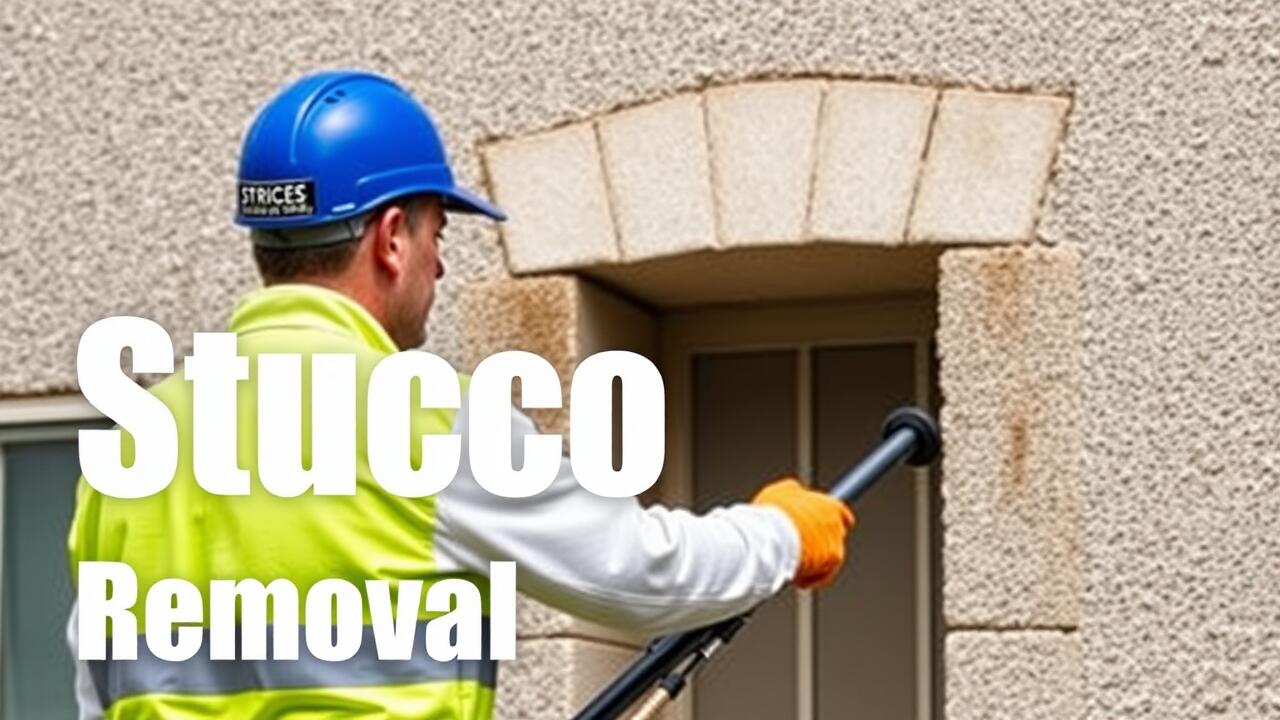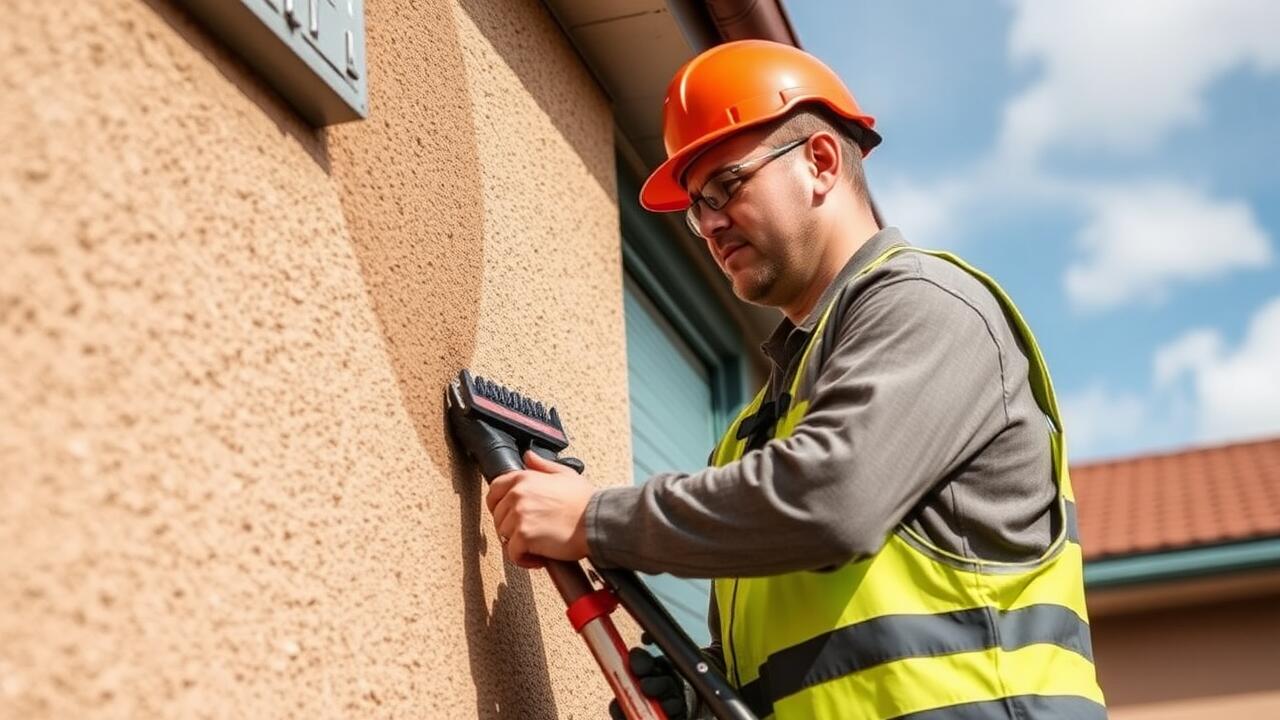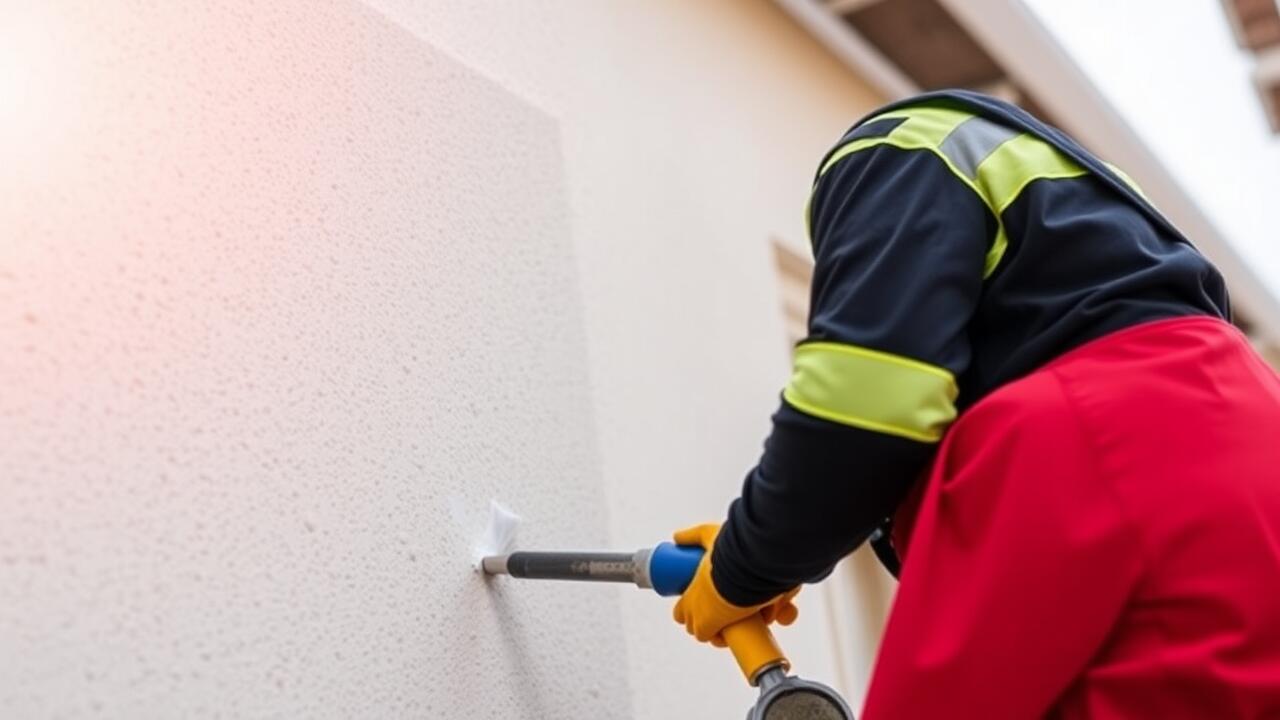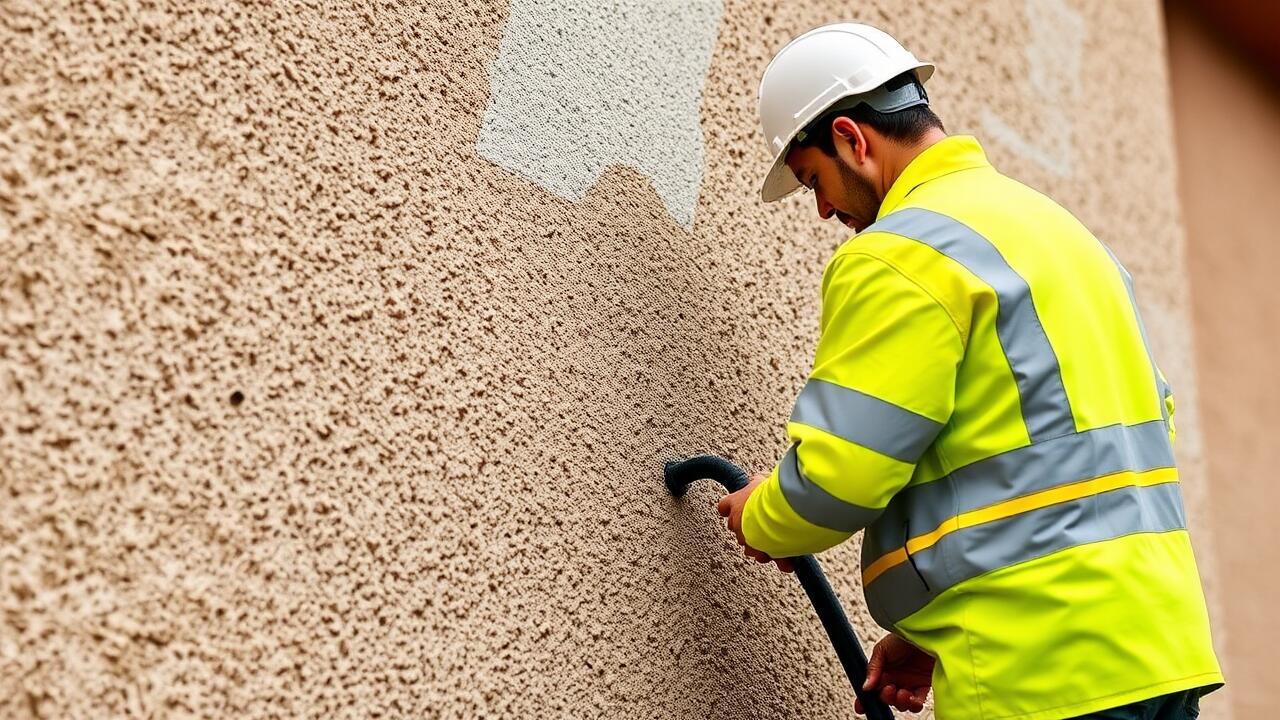
Step-by-Step Guide to Pressure Washing Stucco
Before starting the pressure washing process for stucco removal, ensure the area is clear of obstructions. Remove any furniture or decorations that could get damaged. Wear protective gear, including goggles and gloves, to safeguard against debris and chemical splashback. The next step involves setting up your pressure washer, making sure it’s connected to a power source and water supply. Adjust the pressure settings to match the needs of the stucco surface. Generally, a medium pressure setting is recommended to avoid damaging the material.
Begin pressure washing from the top of the wall and work your way down. This technique prevents dirty water from flowing onto areas you have already cleaned. Hold the nozzle at an angle, maintaining a distance of around 12 inches from the surface. This distance helps to avoid excessive pressure that could harm the stucco. For those located in the area of Stucco Removal Venice, Los Angeles, it’s essential to consider local regulations regarding water usage and runoff to ensure compliance. After washing, inspect the stucco for any remaining grime or damage.
Techniques for Optimal Results
Using the right techniques can significantly enhance the effectiveness of pressure washing for stucco removal. It is important to maintain a consistent distance from the surface while applying water. Typically, a distance of about 12 to 18 inches works well, allowing for sufficient force without causing damage. Begin at the top of the wall and work your way down, ensuring that any dislodged debris is pushed away efficiently. Engaging in small sections at a time can help maintain control and improve the thoroughness of the cleaning process.
In areas like Stucco Removal Crenshaw, Los Angeles, adjusting the spray angle can also yield better results. A 25-degree nozzle is often recommended for stucco, as it strikes a balance between pressure and coverage. Utilizing sweeping motions helps to prevent streaking and evenly applies pressure across the surface. For stubborn stains or heavily soiled areas, you might need to slow down and focus on those spots longer to allow the pressure washer to do its job effectively.
Choosing the Appropriate Nozzle
Selecting the right nozzle is crucial for effective stucco removal. Different nozzle types can significantly impact the cleaning process and the condition of the surface. For stucco, a 25-degree nozzle is typically ideal, as it provides a balance between cleaning power and surface protection. This nozzle delivers a wider spray pattern that minimizes the risk of damaging the soft stucco surface while still effectively removing dirt and grime.
In areas like Stucco Removal Venice, Los Angeles, where homes often feature delicate stucco finishes, it's essential to avoid high-pressure settings that could erode the material. For particularly stubborn stains or heavy buildup, you might consider using a rotating turbo nozzle, which offers concentrated pressure without compromising the material. Testing the nozzle on a small, inconspicuous area before full application helps ensure optimal results while safeguarding the stucco.
Understanding Different Nozzle Types
Different nozzle types play a crucial role in pressure washing, especially when tackling materials like stucco. Nozzles are designed to create varying spray patterns and pressure levels, allowing you to customize your cleaning approach. For stucco removal, a wider spray pattern can help distribute pressure evenly across the surface, minimizing the risk of damage. Commonly used nozzles include the 25-degree and 40-degree options. The latter creates a gentle mist suitable for delicate surfaces, while the 25-degree nozzle offers a bit more pressure for tougher stains.
When planning for stucco removal in Venice, Los Angeles, understanding nozzle types is essential for effective cleaning. Each nozzle's design impacts how water is delivered, influencing both cleaning efficiency and surface integrity. A rotary nozzle can also be beneficial for stubborn grime, as it combines a concentrated spray with a rotating motion to tackle tougher stains. However, caution is necessary to avoid excessive pressure that could compromise the stucco’s texture. Selecting the right nozzle type is key for achieving optimal results without damaging the underlying material.
Post-Cleaning Procedures
After completing the pressure washing process, it is essential to conduct a thorough inspection of the stucco surface. Look for any areas that may have sustained damage during cleaning, such as cracks, chips, or loose sections. Identifying these issues early helps ensure that the integrity of the stucco wall remains intact. A detailed examination allows homeowners to address repairs promptly, preventing further deterioration and costly interventions in the future.
Following the inspection, any identified damage should be repaired using appropriate materials that are compatible with stucco. Patching compounds designed for stucco surfaces work best for filling in cracks and reinforcing weakened areas. Implementing these post-cleaning procedures is crucial for maintaining the aesthetics and durability of your structure. If you are considering stucco removal in Venice, Los Angeles, ensuring proper maintenance after cleaning will enhance the overall appearance and longevity of the surface.
Inspecting and Repairing Stucco Damage
After completing the pressure washing process, it’s essential to inspect the stucco for any damage. Look for cracks, holes, or areas where the stucco may have delaminated from the wall. These imperfections can compromise the integrity of the surface and may have been obscured by dirt and grime before the washing took place. Visual assessments should be thorough, examining corners and joints where moisture can accumulate and cause further issues.
Once any damage is identified, repairs should be made promptly to prevent further deterioration. Small cracks can be filled with a high-quality stucco patching compound, while larger holes may require a more extensive repair process. Ensuring proper adhesion and matching the texture of the original stucco can be challenging but is vital for achieving a seamless repair. Homeowners in need of professional assistance might consider services that specialize in stucco repair, especially those offering expertise in regions like Stucco Removal Venice, Los Angeles.
FAQS
Can I use a pressure washer on all types of stucco?
While many types of stucco can handle pressure washing, it's important to assess the condition and type of your stucco. Older or damaged stucco may require gentler cleaning methods to avoid further damage.
What nozzle should I use for pressure washing stucco?
For pressure washing stucco, a wide fan nozzle (typically 25 or 40 degrees) is recommended. This helps distribute the water pressure evenly and reduces the risk of damaging the stucco surface.
How far should I hold the pressure washer from the stucco?
It's best to maintain a distance of about 12 to 18 inches from the stucco surface while pressure washing. This distance helps prevent damage while still effectively removing dirt and debris.
What should I do if I notice damage to the stucco after cleaning?
If you find damage to the stucco after cleaning, inspect it thoroughly for cracks or loose areas. You may need to repair it using appropriate stucco repair products or consult a professional for significant damage.
How often should I pressure wash my stucco?
It’s generally recommended to pressure wash stucco every 1 to 2 years, depending on environmental factors like dust, mold, and mildew. Regular cleaning helps maintain its appearance and prolongs its lifespan.



